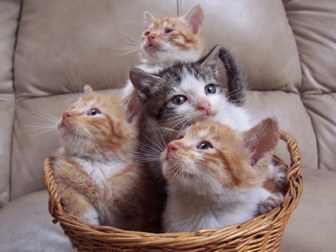


Next: Flow control
Up: perl1st
Previous: First encouter
Subsections
- Strings are sequences of characters
- enclose the string with double-quotes or single-quotes to
identify the beginning and ending of the string.
Examples:
"banjo", ' fiddle', "Pick'n Grin", 'Pick\'n Grin', "ATGTTATACG", "1 + 2 + 3", ' ', ''
- backslash (
\) can be used to ``escape'' special meaning
of quotes.
Exercises:
Let's see the differences between double- and single-quotes.
- Make a small perl scripts which prints out the following strings. Make
sure to print "
\n" so that one string per line is printed.
"Pick'n Grin", 'Pick\'n Grin', "ATGC\n", 'ATGC\n', '"\t"\n', "\"\t\"\n", '"'
- How do you make a text string containing backslash (
\)?
Modify the script to print this out.
Note that single quotes are more literal, and it does not
``interprete'' many special or escape characters. Inside of single
quotes, only two special characters can be used. What are these two?
- In programming, you frequently make a container
(variable), and put things (assgin values) in it.
$x = 4 ;
$x = $x - 2 ;


- $ in front of variable name indicates that this is a
simple scalar variable (more later).
- Assignment with a character string.
#!/usr/bin/perl -w
$message = "5 beer, please.\n";
print ($message);
exit;
This program will do exactly same as the previous version without a variable:
print ("5 beer, please.\n");
= means assignment. Distinguish it from ``eqaul'' sign in mathematical equations.
$x=$x+2
This dosn't make a mathematical sense, does it?
- You can use whatever names for the variables (containers).
$numSeqsFromFish = 2 ;
$SCREAMER100 = 0 ;
$buZZ_bEE = 4 ;
- Allowed characters and lengths for a variable name:
- Alphabet: a-z, A-Z (it can be European characters)
- Numbers: 0-9, but you can't start a variable name with a digit.
- underscore:
_
- Length: 1 character or more, it can be pretty long
- Case sensitive:
$var1 is a different variable from $Var1.
- It is a good practice to start with a lower case letter.
- Use self-explanatory name without being too verbose.
$this_variable_contains_length_of_ADH_gene_before_splicing = 589;
$popSize = 100 ;
$ocRate = 0.3 ;
Concatenate two DNA sequences:
#!/usr/bin/perl -w
$seqA = "ATATA";
$seqB = "GCGCG";
# concatenating 2 seqs
print "1st method:\t", $seqA, $seqB, "\n";
$joinedSeq = "$seqA$seqB";
print "2nd method:\t$joinedSeq\n";
$joinedSeq = $seqA . $seqB; # using concatenate operator (.)
print "3rd method:\t", $joinedSeq,"\n";
exit;
# indicates comment. Anything behind # to the end
of the line is ignored
- You can combine strings, variables, and expressions with comma
(,) in the print statement. The followings are ok, too:
print "5 + 6 = ", 5+6, "\n";
print "2/3 = ", 2/3, "\n";
- The double quotes allow the variables in the string
to be replaced with their values (string interpolation)
$joinedSeq = "$seqA$seqB";
- Interpolation means, anything that Perl recognizes as
a variable gets replaced by the value of that
variable.
- Sometime you need to use the following form (curly braces
around the variable name):
$seqA = "${seqA}nnn";
If you write "$seqAnnn", perl thinks that there is a
variable called $seqAnnn, instead of adding ``nnn'' at the
end of $seqA
- The single quotes (') prevent string interpolation and
conversion of special characters (e.g.
\n and \t).
Try adding the following line before exit; statement to confirm this.
print 'single quotes: $seqA$seqB\n';
- Exercises:
Make a small program to do the following steps:
- Assign your name to $var1
- Assign a string, "is a great perl hacker", to $stringVar
- Using the three methods of concatenating the two variable, let
the program tell you the truth (i.e. the program should print out
that you are a good programmer).
| +, -, *, / |
Arithmetic operators |
| $a % $b |
Modulus |
| $a ** $b |
Raises $a to the power of $b |
| $a . $b |
Concatenates two strings. |
| (some operation) |
The operation in the parentheses get executed first |
| |
|
| $a = $b |
Assignment |
| $a += $b |
same as $a = $a + $b. |
| -=, *=, /=, .= |
Similar to above |
$a++, $a-- |
Incremeny, decrement by one. |
| "abc" x 4 |
String multiplication (results in "abcabcabcabc") |
Exercises:
Make the following perl script. Pay attention to what the opertors
are doing to the variables (containers).
$a = 16;
print "$a\n";
$a += 4;
print "Added 4: $a\n";
$b = $a;
$mod = $b % 4;
print "$b mod 4 = $mod\n";
$a--;
print "decremented: $a\n";
$codon = "ATG";
$codon .= " CCC";
print "$codon\n";
Perl has three main variable types:
- Scalars: this variable stores a single value (like a cat basket above)
- Arrays: this variable stores multiple values (like a compartmentized basket)
- Hashes: extremely useful, see below
$popSize = 1000; # integer
$probability = 0.9; # floating point
$smallVal = 2.11E-2; # floating point with engineering notation
$name = "Bob"; # character string
- An array represents a list of values:

@animals = ("camel", "llama", "owl");
@numbers = (23, 42, 69);
@mixed = ("camel", 42, 1.23);
- Arrays are zero-indexed. Here's how you get elements in an array:
print $animals[0]; # prints "camel"
print $animals[1]; # prints "llama"
The elements we're getting from the array start with a
$ because we're getting just a single value out of the
array -- you ask for a scalar, you get a scalar.
Exercises:
What happens if you negative integer (e.g. -1 or -2) as the indices? Try printing them out.
- Printing array
Try following, and see the difference:
print @animals; # Array NOT enclosed in double quotes
print "\n";
# interpolating an array into char string
print "@animals"; # Array enclosed in double quotes
print "\n";
- Other ways to create an array
- Method 1: sparse array
$trees[0] = 'spruce';
$trees[1] = 'birch';
$trees[2] = 'aspen';
$trees[99] = 'alder';
This will create an array @trees.
- Method 2: qw(), quoted by white space, or quoted words
@animals = qw( camel llama owl );
This creates exactly same array as defined above.
You can reduce typing lots of quote marks and commas.
- Method 3: sequential integers
@seqNum = 11..15;
exactly same as:
@seqNum = (11, 12, 13, 14, 15);
- Exercises:
- With
@trees array, what happens if you print 50-th element? How about printing an element with -100?
- Check if qw() will do interpolation. In other words, is it similar to
(
') or (")?
- With the method 3, what happens if you use alphabets instead of integers?
- Modifying a value of an array
Try the following, and note how elements of @a changes at each step:
@a = (1, 2, 3, 4, 5);
print "orig: @a\n";
$a[4] = 10;
print "1st : @a\n";
$a[2] = $a[1] ** $a[2];
print "2nd : @a\n";
$a[-2] = $a[1];
print "3rd : @a\n";
- The special variable $
#array tells you the index of
the last element of an array:
print $mixed[$#mixed]; # last element,
prints 1.23
- Size of an array
- To get multiple values from an array (array slice):
@subset = @animals[0,1]; # gives ("camel", "llama");
@subset = @animals[0..2]; # gives ("camel", "llama", "owl");
@subset = @animals[1..$#animals]; # gives all except the first element
Similar to arrays because a hash can contain multiple data (values).
Different from array because hash values are looked up (indexed) by
names (keys), instead of numerical indecies in arrays.
Extremely useful, and central to Perl programming.
- A hash represents a set of key/value pairs:
%fruit_color = ("apple", "red", "banana", "yellow");
Following will achieve the same, but it looks nicer:
%fruit_color = (
"apple" => "red",
"banana" => "yellow"
);
It's like a look-up table.
- To get a hash elements:
$fruit_color{"apple"}; # gives "red"
NOTE: the entire hash table is refered as %fruit_color with
%. But to access an element which is scalar, you use ``$''.
You can use expression or variable names as the key. If the key is
not a simple character string, interpolation and evaluation of the
expression occurs BEFORE the look-up.
$thisFr = 'apple';
print "Color of $thisFr is $fruit_color{$thisFr}\n"; # interpolation
$name = 'ana';
$frCol = $fruit_color{'ban' . $name};
- Adding key and value combo to hash:
%sound = (); # empty hash table
$sound{'ukulele'} = 'happy';
$sound{'banjo'} = 'loud';
- Deleting a key/value pair.
delete $sound{'ukulele'};
It removes the given key, and the corresponding value from the hash %sound.
- You can get lists of keys and values with keys() and
values() functions.
@fruits = keys(%fruit_colors); # ("banana", "apple")
@colors = values(%fruit_colors); # ("yellow", "red")
- The order of the arrays created by keys() and values() is not preserved.
- The key has to be unique. But values does not have to be unique.
This is NOT OK because when you access $fruit_color{"apple"},
perl doesn't know if you want the first one or second one.
%fruit_color = (
apple => "red",
apple => "green",
banana => "yellow"
);
Duplicated values are OK:
%fruit_color = (
apple => "red",
banana => "yellow",
lemon => "yellow",
);
Type in the following program, and think what it is doing.
#!/usr/bin/perl -w
my %recognitionSite = (
"EcoRI" => "G^AATTC",
"HindIII" => "GG^CC"
);
$recognitionSite{"AatII"} = "GACGI^C"; # adding more key/value combos to
$recognitionSite{"XbaI"} = "T^CTAGA"; # the hash
my @knownEnzymes = keys(%recognitionSite);
print "Known enzymes: ", join(",", @knownEnzymes), "\n";
for( ; ; ) {
print STDERR "Restriction Enzyme?: ";
my $enzyme = <STDIN>;
chomp ($enzyme); # remove the newline;
print "Recognition Site = $recognitionSite{$enzyme}\n\n";
}
exit;
Note: join function: join($glue, @list) takes a list
of values, and ``glue'' them with $glue string and return a
scalar (string).
Create a directory with your first name inside of /scratch/compbio/hw. Then create a directory called hash in
there (e.g. /scratch/compbin/hw/naoki/hash for me). After
completing the following homework, please copy your 3 scripts into
this directory.
- Make an array with 4 elements: ("AAA","AAT","AAG", "AAC").
Then print out the last element.
- Make a hash, whose keys are the name of species and values are
their DNA sequences. You can use the following fake sequence
data:
| species |
DNA sequence |
| camel |
ATGCCTATTGGA |
| llama |
ATGACTACCGGC |
| owl |
ATGAAGAGGGTC |
Then print out the sequence of llama.
Then concatenate the three sequences (store it in a new scalar
variable), and print out the concatenated sequence.
- Can you make a program which will ask for 3 nucleotides, and
print out the amino acid corresponding to the codon? You can
basically modify the example program (restriction site) used in the
hashes section.



Next: Flow control
Up: perl1st
Previous: First encouter
Naoki Takebayashi
2011-10-06


